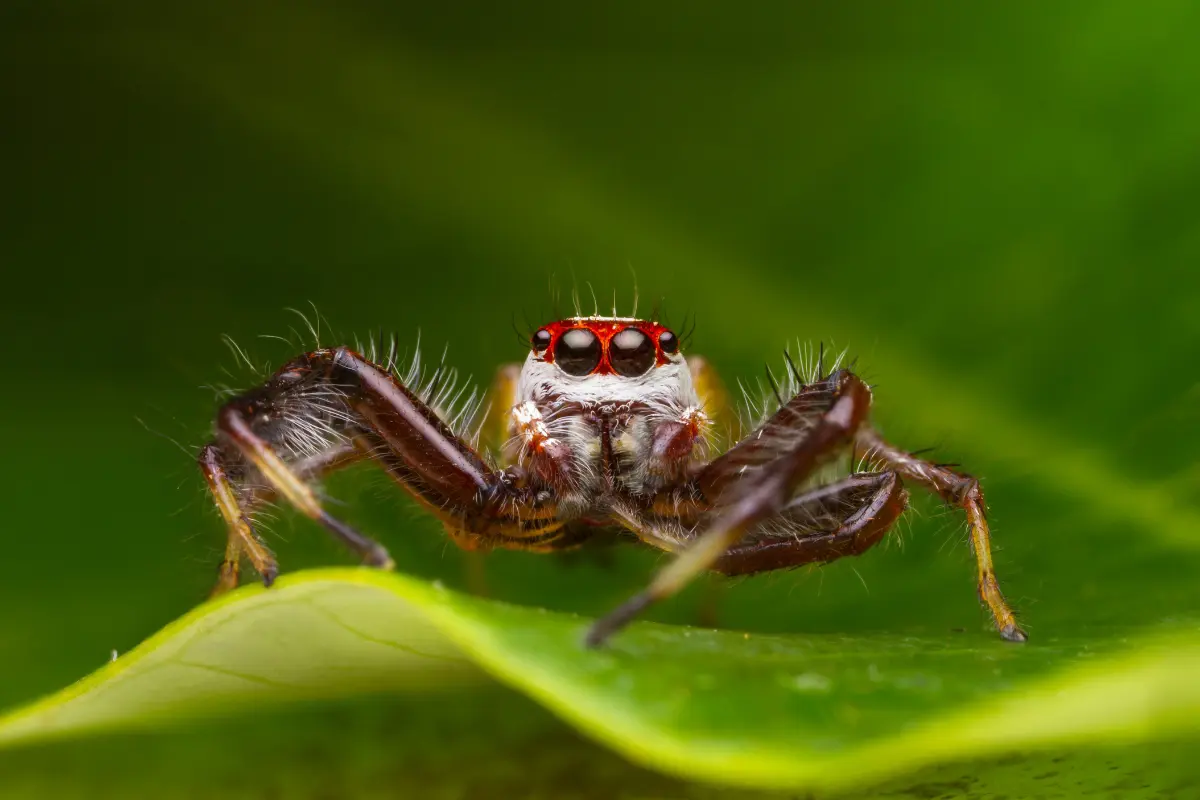A Complete Guide to Feeding Jumping Spiders

As with any pet, understanding how to care for jumping spiders is essential for ensuring their health and well-being. One crucial aspect of their care revolves around their diet – what to feed them, how often, and the nuances that come with catering to these unique creatures. In this comprehensive guide, we delve into the intricacies of feeding jumping spiders, from the types of prey they thrive on to the frequency of their meals. Whether you’re a seasoned spider keeper or a curious beginner, this guide aims to provide you with valuable insights into the art of nourishing these incredible arachnids.
Let’s embark on a journey into the world of jumping spider nutrition, exploring the dos and don’ts that will contribute to the thriving life of your eight-legged companions.
Suitable Prey Selection
Imagine you’re at a buffet, and you want to pick the tastiest bites – that’s exactly what we’re doing for our jumping spiders. These critters are carnivores, meaning they’re all about the protein-packed goodies. They’re skilled hunters, so they prefer live prey that can give them a run for their money, or in this case, their leaps!
Right Sizes Matter
Remember Goldilocks and the Three Bears? It’s kind of like that, but with prey size. You don’t want something too big that your spider can’t handle, or too small that it’s not even a satisfying snack. Opt for prey that’s around the same size or slightly smaller than your jumping spider’s body. Think of it as a “just right” meal.
Variety is the Spice of Life
Imagine eating the same thing every day – it gets boring, right? Well, our spider friends appreciate variety too. Offering a mix of prey keeps their diet balanced and exciting. It’s like taking them on a gastronomic adventure through the miniature world of insects.
Jumping Spider Pets
- Overcome Pet Jumping Spiders Challenges
- How to set up a Jumping Spider Habitat
- Can Jumping Spiders Be Kept as Pets?
Prey Options
- Flies: Small, live flies are like gourmet treats for jumping spiders. These quick-moving snacks can trigger their hunting instincts.
- Crickets: For the larger jumping spiders, crickets are on the menu. Just make sure they’re not bigger than your spider’s body.
- Ants: Some jumping spiders may have a taste for ants, but make sure they’re from safe, pesticide-free areas.
- Mealworms: These are like protein-packed power bites for your spider pals. Great for the bigger ones.
- Other Small Insects: Tiny gnats, fruit flies – they’re all potential candidates for a spider feast.
Don’t Forget Frequency
Alright, now that we’ve got the food sorted, how often are we putting it on the table? Think of it as a spider dinner party – you’re aiming to serve every 1 to 3 days. But here’s the catch: spiders, like all good hosts, have their preferences. Some eat more frequently, while others are a bit more laid-back. It’s a good idea to keep an eye on your spider’s appetite and adjust accordingly.
Feeding jumping spiders isn’t just about giving them food; it’s about keeping their natural hunting instincts alive. It’s like watching a mini wildlife documentary unfold right in your home. So, think of yourself as the chef in this eight-legged restaurant – crafting menus that keep your jumping spiders happily hopping.
Now that we’ve covered the basics of what your jumping spiders would love to sink their fangs into, let’s dive a bit deeper into the art of feeding these agile hunters.
Feeding Techniques
Okay, imagine you’re hosting a dinner party for some really energetic guests. You can’t just plop the food down and expect them to be satisfied, right? Jumping spiders are quite interactive when it comes to their meals. You can use a small paintbrush or a pair of fine-tipped forceps to mimic the movement of their prey. This triggers their hunting instincts, and it’s like watching a tiny, arachnid chase scene.
- Spiderlings Have Their Own Appetite: Spiderlings, the adorable mini versions of adult jumping spiders, have different needs. They’re like hungry teenagers – they need to eat more frequently. Smaller prey like fruit flies or pinhead crickets are their version of comfort food. So, don’t be surprised if they’re constantly raiding the pantry!
- No Water Dish Required: Unlike some other pets, jumping spiders don’t need a fancy water dish. These little acrobats usually get all the moisture they need from their prey and the environment. So, no need to worry about setting up a spider-sized water bowl.
- Feeding Dead Prey – Not Ideal: Alright, here’s an interesting twist – feeding jumping spiders dead prey might not be their jam. These creatures are all about the thrill of the hunt. Live prey is like a dinner and a show for them. Dead bugs might not get their hunting instincts firing up as much, and we wouldn’t want to disappoint our spider buddies, right?
Roommates or Not?
If you’re thinking of keeping multiple jumping spiders, be cautious. Some spiders might get a little too friendly with their roommates, in a not-so-friendly way. Cannibalism can happen, especially in close quarters. So, unless you want a Spider Hunger Games situation, it’s usually better to keep them individually.
Feeding your jumping spiders is like being the head chef at a tiny, exotic restaurant. With a menu of live insects and a sprinkle of creativity, you’re not only ensuring their nutritional needs are met, but you’re also fostering their natural behaviors. It’s like setting up a mini jungle safari right in your home, complete with acrobatic feats and cute, tiny predator-prey dances. So, let’s keep our jumping spiders appetite well-fed and hopping with joy!
